Special Report
This Is Exactly What Happens to Your Skin as You Age

Published:
Last Updated:

Americans spend billions of dollars on skin-care products each year in the hopes these products will help keep their skin looking young and healthy. The skin-care market has been growing steadily for years, and global value sales are projected to exceed $131 billion in 2019, according to Euromonitor International, a strategic marketing company.
Some products, in addition to a healthy lifestyle — which does not include smoking, but includes proper sleep, exercise, and eating fruits and vegetables — may help delay some of the inevitable changes in the skin’s appearance such as the dreaded wrinkles.
These fine lines, along with other signs of aging like dryness and age spots, have one major common cause — sunlight. Prolonged exposure to ultraviolet radiation from the sun’s rays kills the fibers that keep the skin firm. (Prolonged exposure to the sun is also directly linked to skin cancer, the most common cancer in the United States.)
The loss of elasticity, along with gravity, are what contribute most to other age-related skin problems, including sagging and drooping. As we age, collagen, a protein that gives gives the skin its firmness, begins to degrade. The breakdown of elastin, a protein critical to elasticity, also contributes to skin discoloration.
A vast majority of older people have skin problems, according to the National Institutes of Health. Skin problems are so common that doctors cannot always tell if they are just a normal part of aging or a worrying disorder.
To identify 10 major changes the skin undergoes as it ages, 24/7 Wall St. reviewed several clinical studies and research published in the International Dermal Institute and various journals such as Aging Cell. You can also read about how dermatologists say you can keep your skin young, healthy, and smooth for longer.
Click here to see what happens to your skin as you age.
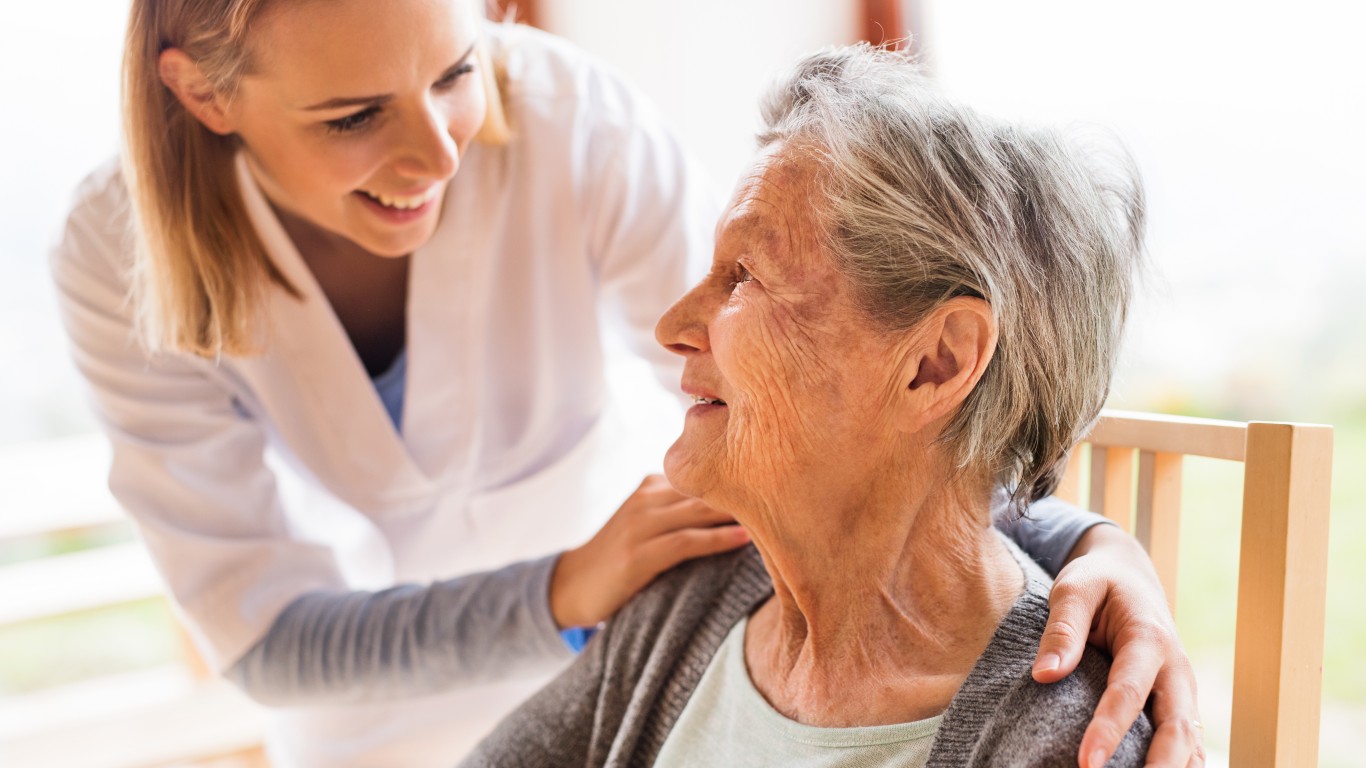
1. It loses elasticity
As people get older, the dermis, which is the thicker and deeper layer of the skin, can lose from 20% to 80% of its thickness due to changes in the cells responsible for collagen and elastin biosynthesis. These proteins are produced at a slower rate, affecting the skin’s structure, causing it to hang loosely and become slack. Changes in elastin fibers are typical in elderly people, sometimes leading to a condition called elastosis. In solar elastosis, caused by sun damage, the skin looks yellow and can develop bumps.
[in-text-ad]

2. It takes longer to heal
Eccrine sweat glands, which secrete sweat to the skin surface to help cool a person’s body temperature, also help heal wounds. They are, in fact, a source of new cells that replace the ones lost to injury. However, this process does not work as well in older adults as it does in younger people, according to research published in Aging Cell. There are fewer new cells available to heal wounds, and they are located farther part, resulting in a delayed healing process. The reason is not that the glands were less active, but that the degraded aging skin was less able to support the new cells.

3. It develops benign tumors
It is not cancer, which can be scary. A benign tumor is a non-malignant growth of cells, which means it does not spread. Benign tumors have been linked to ultraviolet radiation coming from the sun. Skin tags and moles are examples of benign tumors, and aging skin is more prone to developing them. Medically, they are benign proliferation of melanocytes, which are the cells that produce the protective skin-darkening pigment melanin.

4. It becomes transparent
It is not uncommon for the skin to become more transparent in elderly people, especially in those with rheumatoid disease. Veins on the hands, wrists, ribs, and shins of elderly people can be seen through the skin. Clinical studies of biopsies found that collagen fibers, which are what keep the skin firm and looking young, are not as closely packed in transparent skin as they are in more opaque skin.
[in-text-ad-2]
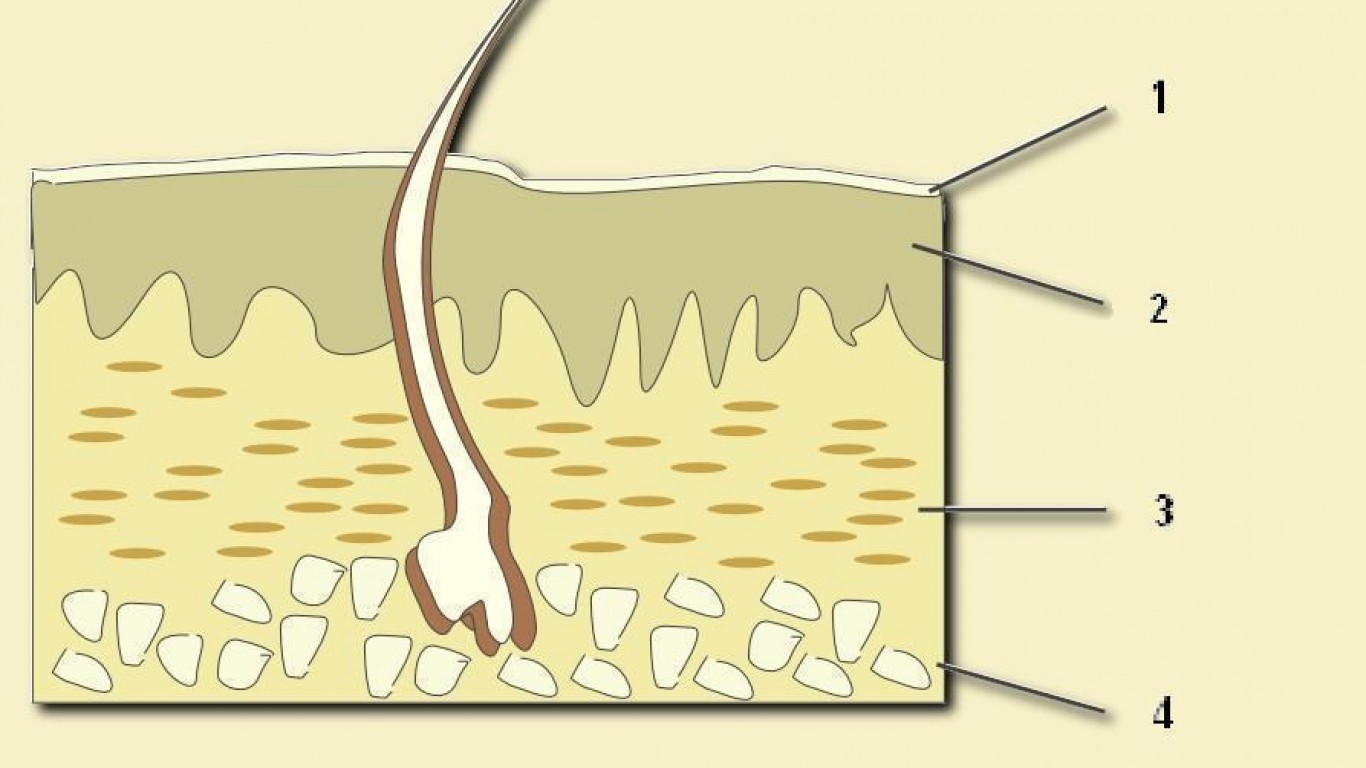
5. It loses a protective layer of fat
The subcutaneous layer, or the inner layer of the dermis, is where the sweat glands, some hair follicles, blood vessels, and fat are found in the skin. As we age, this protective layer of fat thins, providing less insulation to the skin, and making it more fragile and susceptible to injury. Older people may therefore be more sensitive to cold, heat, and touch.
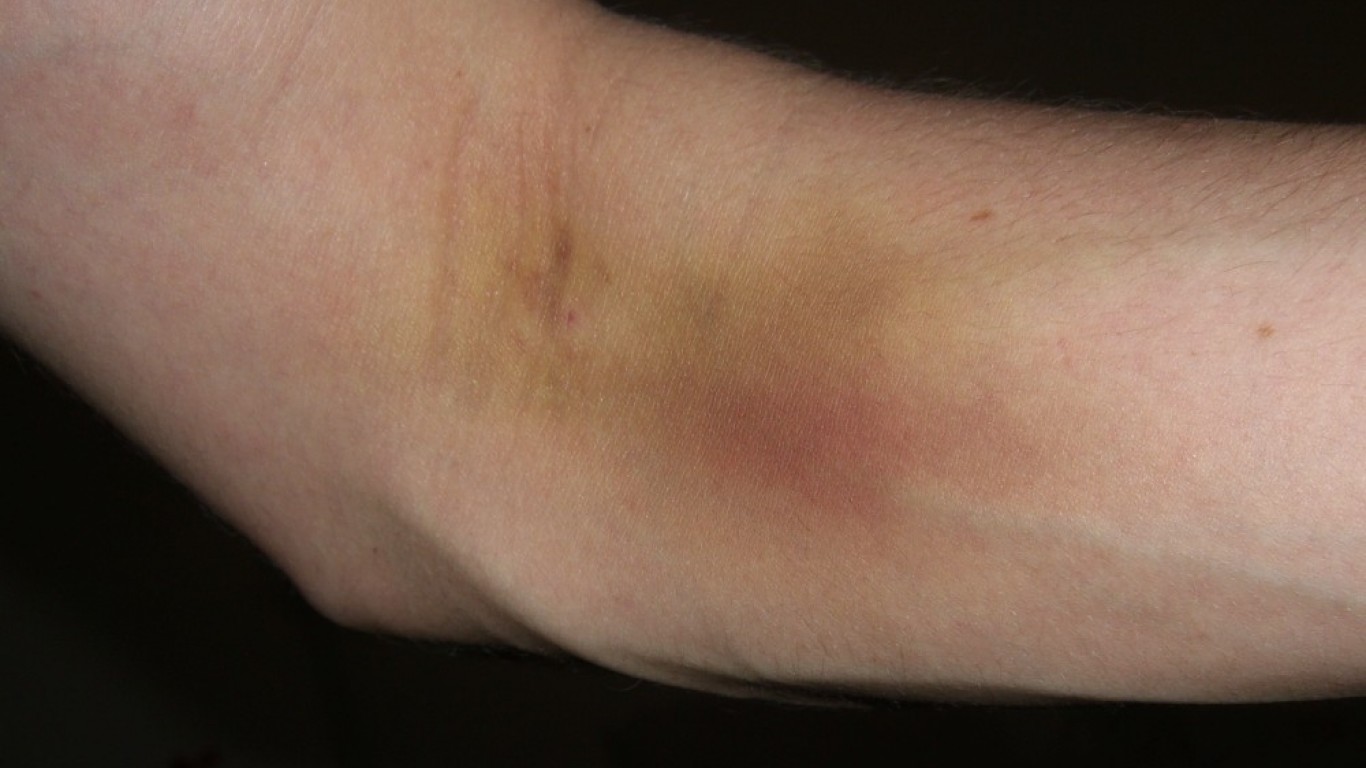
6. It bruises easily
Bruising is common in older adults because the skin is thinner. Due to the loss of some of the fat that protects the blood vessels from injuries, blood vessels can break more easily with blood leaking out, forming a bruise. The blood vessels themselves are more fragile, too. They lose elasticity, which makes them more susceptible to breaking. The most common parts of the body where bruising occurs are the back of the arms and legs.
[in-text-ad]
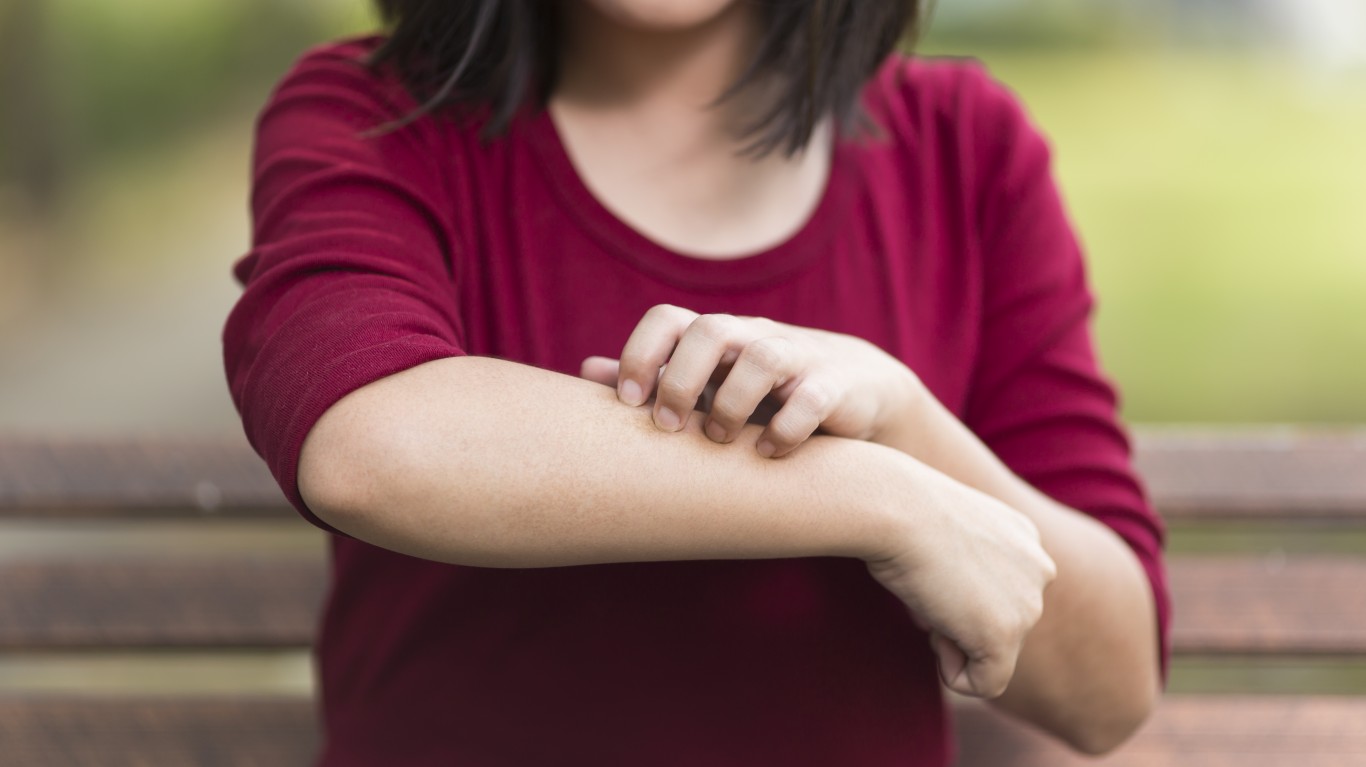
7. It becomes rough, dry, and itchy
Sebaceous glands, which are responsible for lubricating the skin, produce less oil with age. This is visible mostly in older women, whose glands gradually start making less oil after menopause. The lower levels of sebum, the oily matter secreted by the gland, means lower levels of moisture in the skin, which can cause dryness and itchiness.

8. It retains more heat
Older people sweat less than younger adults because sweat glands become less efficient over time, producing less sweat, which makes controlling body temperature more difficult. The risk of overheating and heat strokes increases with age.
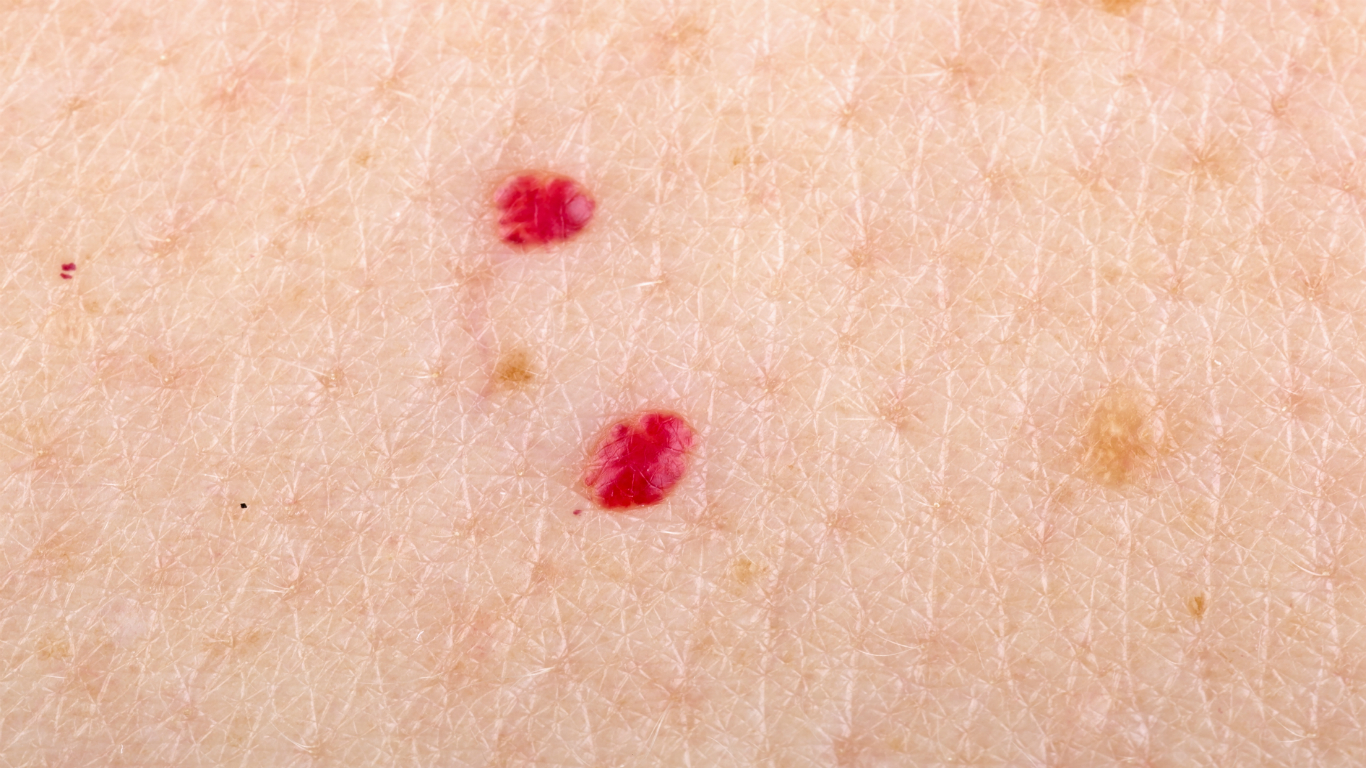
9. It grows cherry bumps
Cherry bumps, also known as cherry angiomas, look like red moles. They are the result of an overgrowth of capillaries. Most common among people older than 30, they are basically dilated blood vessels that often show up on the chest, stomach, or back. Why exactly they develop is not clear, but they are not a cause of concern, unless they bleed often or change color or size.
[in-text-ad-2]
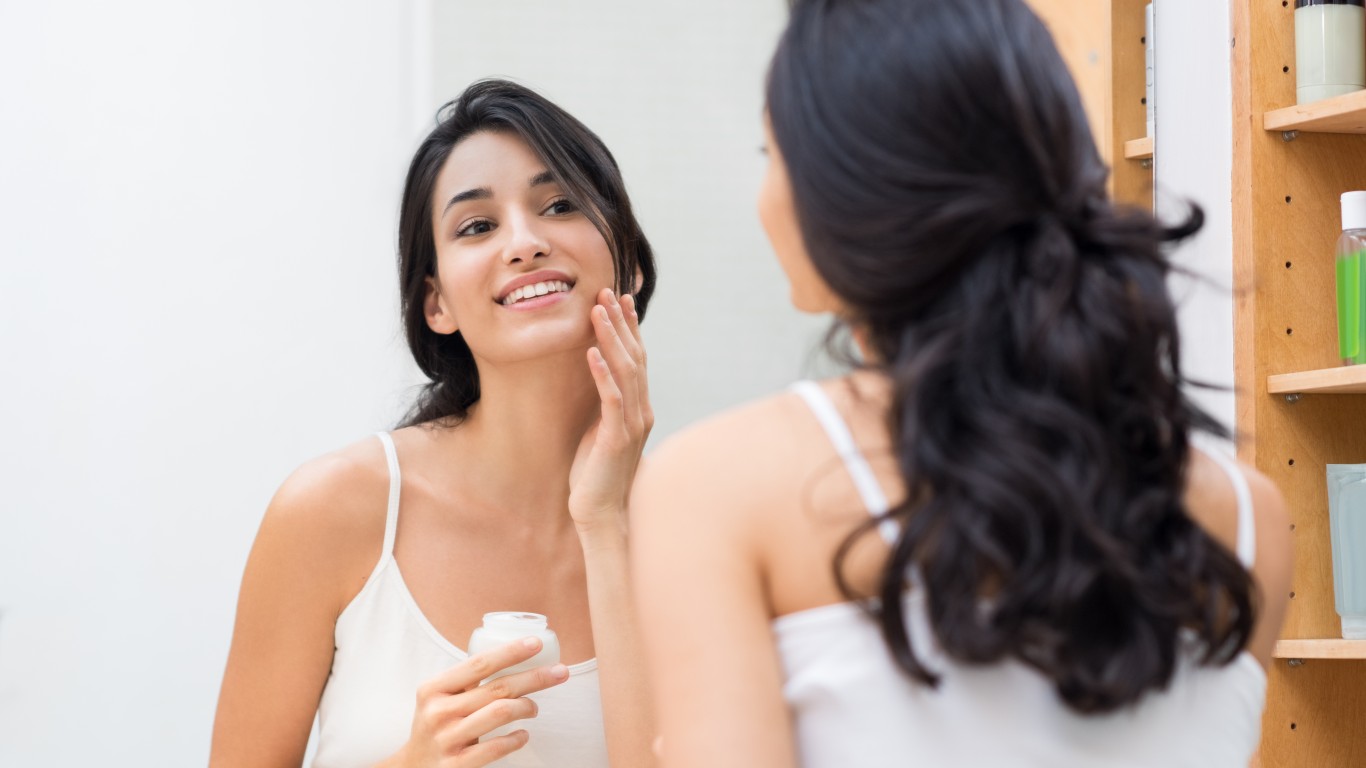
10. It becomes less responsive to some meds
The innermost layer of the skin consists of fat and connective tissue. Because it contains many blood vessels and nerves, it easily absorbs medications. Some medications, such as those for acne and dermatitis, are absorbed by the fat layer that the skin thins out as people age. Hence, the meds are less effective.
Let’s face it: If your money is just sitting in a checking account, you’re losing value every single day. With most checking accounts offering little to no interest, the cash you worked so hard to save is gradually being eroded by inflation.
However, by moving that money into a high-yield savings account, you can put your cash to work, growing steadily with little to no effort on your part. In just a few clicks, you can set up a high-yield savings account and start earning interest immediately.
There are plenty of reputable banks and online platforms that offer competitive rates, and many of them come with zero fees and no minimum balance requirements. Click here to see if you’re earning the best possible rate on your money!
Thank you for reading! Have some feedback for us?
Contact the 24/7 Wall St. editorial team.